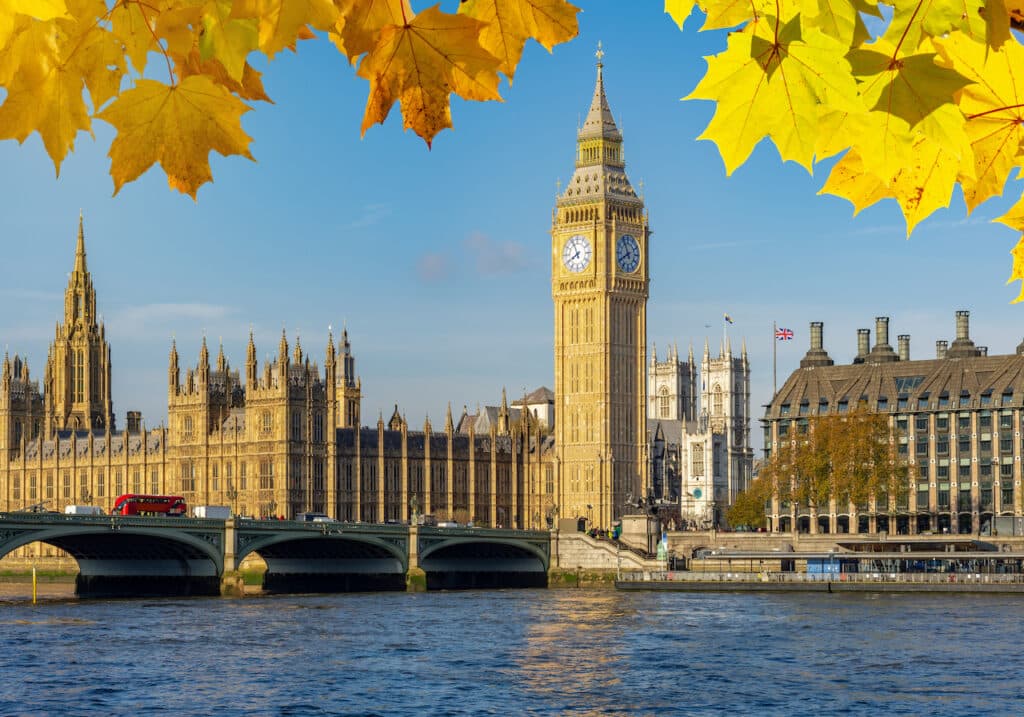Every election year brings a wave of Americans daydreaming about a fresh start north of the border. After 2024, more people are turning those dreams into action.
For many, Canada’s appeal is clear: universal healthcare, a strong social safety net, and a reputation for stability. Add in growing concerns at home—whether political, economic, or personal—and it’s no surprise that interest in Americans moving to Canada is rising in 2025.
But crossing the border isn’t as simple as packing a bag. The Canadian immigration process involves strict rules, clear paperwork, and a good understanding of how the Immigration, Refugees and Citizenship Canada (IRCC) system works.
If you’re considering the move, here’s what to expect—and how to get started the right way.
📋 Key Updates for 2025
- Canada cut permanent residency targets by 20%, leading to longer immigration wait times.
- Tariffs are raising the cost of groceries and goods, especially in major cities.
- Non-residents can now file Canadian taxes online, simplifying cross-border compliance for U.S. expats.
What does it take for Americans to move to Canada legally?
Moving to Canada sounds simple enough, but becoming a legal resident requires more than just crossing the border. Every American citizen must go through Canada’s official immigration process, managed by Immigration, Refugees and Citizenship Canada (IRCC).
Key things to know before you apply:
- Visa requirements: You’ll need to qualify under an approved visa or immigration program, such as a work permit, study permit, Express Entry, or spousal sponsorship.
- Approval process: Meeting basic eligibility doesn’t guarantee acceptance. Canada’s immigration system is competitive and points-based.
- U.S. green card holders: If you have a green card (U.S. permanent residency), moving to Canada could put that status at risk. Extended absences from the U.S. can trigger abandonment.
- U.S. citizenship: U.S. citizens can move to Canada without giving up their citizenship. Dual citizenship is permitted.
- Deportation risks: Permanent residents of Canada, including Americans, can be deported for serious crimes or immigration violations.
Canada remains an attractive destination for many Americans, but success starts with understanding the rules—and following them closely.
What are the main pathways for Americans moving to Canada?
The Canadian immigration system offers several ways for Americans to make the move—but choosing the right path depends on your background, your goals, and sometimes even a bit of timing.
Here’s an overview of the most common options:
- Express Entry System: Canada’s primary skilled worker program. It uses a points-based system that rewards education, language skills, and work experience. Competitive but efficient if you qualify.
- Provincial Nominee Program (PNP): Provinces like Nova Scotia, British Columbia, and Alberta can nominate candidates who have specific skills needed locally. PNPs can be faster if you already know where you want to live.
- Family sponsorship: If you have close family who are Canadian citizens or permanent residents—such as a spouse, common-law partner, or parent—you may qualify for sponsorship.
- Work permits: If you have a job offer from a Canadian employer, you can often move on a temporary work permit first. Some permits can eventually lead to permanent residency.
- Student visas and Post-Graduation Work Permits (PGWP): Many Americans study in cities like Vancouver and Montreal and stay afterward. A student visa can be a stepping stone to permanent residency if you qualify after graduation.
- Start-up visa program: Designed for entrepreneurs with innovative business ideas who are backed by approved Canadian investors. Popular for tech founders and small business owners.
While headlines back home—from Donald Trump to new tariffs—may push some Americans toward a fresh start, moving to Canada successfully depends on careful planning, not just good intentions.
💡 Pro Tip:
Choosing the right immigration program isn’t just about eligibility—it’s about matching your long-term goals. Whether you’re moving for a job, for family, or for a different quality of life, each program has its own requirements and timelines.
Do you need a job to move?
If you’re planning a move to Canada, having a job lined up can make the process easier—but it isn’t always required. Whether you’ll need one depends on which immigration pathway you choose, how competitive your profile is, and what your long-term goals look like.
In general, work experience and job offers play a major role in Canada’s skilled worker programs. For example:
- Express Entry awards points for work experience, education, and language ability. You don’t need a job offer to apply, but having one can give your application a major boost—and could be the difference between an invitation and a long wait.
- Provincial Nominee Programs (PNPs) often focus on candidates with specific skills or job offers in high-demand sectors. If you already have an offer from an employer in provinces like British Columbia or Ontario, you’ll have a stronger case for nomination.
- Work permits generally require a valid job offer first, especially if you’re planning to live and work temporarily before applying for permanent residence.
If you’re wondering where to focus your search, healthcare, education, and technology remain some of Canada’s highest-demand sectors. Nurses, teachers, software developers, and IT specialists are in short supply, particularly in major cities like Toronto, Vancouver, and across British Columbia.
That said, a job offer isn’t the only way to make your move.
International students often use their Canadian degrees to transition into the workforce through a Post-Graduation Work Permit (PGWP), building local experience that later qualifies them for permanent residency.
💡 Pro Tip:
If you’re coming to join family members already living in Canada, you won’t need a job offer yourself. However, your sponsor must meet Canada’s financial support requirements—showing they have enough income to support you without relying on public benefits.
Understanding Canada’s residency and citizenship process
Moving to Canada is exciting—but staying permanently takes a little more work.
Most Americans start out as temporary residents with a work permit, study permit, or visitor status. From there, the goal is permanent residency (PR)—your ticket to living, working, and planting roots without an expiration date.
Here’s how the process usually works:
- Step one: Become a permanent resident through programs like Express Entry or Provincial Nominee Programs.
- Step two: After three years of living in Canada (within a five-year window), apply for citizenship.
- Step three: Pass a language test, ace a citizenship exam about Canada’s government and history, and swear the oath. Congratulations—you’re now officially Canadian.
The best part?
You don’t have to give up your U.S. citizenship. Both the U.S. and Canada allow dual citizenship, meaning you can cheer for two countries at the Olympics (and file two sets of taxes—sorry, we had to say it).
If you’re working, studying, paying taxes, or contributing to your community, you’re already building the Canadian experience that immigration officers love to see.
💡 Pro Tip:
Canada welcomes skilled immigrants and foreign workers who want to be part of the country’s future—it just expects you to show you’re serious.
Cost of living in Canada vs. the U.S.A.
Moving to Canada comes with a lot of perks—but a magically cheaper lifestyle isn’t always one of them.
Overall, Canada’s cost of living varies widely by province and city. Places like Toronto and Vancouver often rival New York City or San Francisco for high housing costs, while smaller cities like Halifax or Quebec City can feel like a bargain by comparison.
Here’s how costs typically stack up:
- Rent: Big cities will hit your wallet hardest. Toronto rents are high and climbing. Montreal, while cheaper, is gaining ground.
- Food: Groceries tend to be more expensive in Canada than in much of the U.S.—and newly introduced tariffs in 2025 are pushing some prices even higher. Add a shorter growing season and longer transportation routes, and your grocery bill can feel noticeably heavier in many provinces.
- Transportation: Public transit is strong (especially in metro areas), but owning a car can be pricier, with higher insurance rates than many U.S. states.
- Education: Private schools cost less than in the U.S., and public universities are far more affordable—even for international students.
Hidden costs to watch for:
- Healthcare isn’t free. While Canada’s healthcare system covers a lot, you may still need private insurance for dental, vision, and prescription drugs.
- Taxes are higher. You’ll likely pay more in sales tax (often 13–15%) and income taxes at the provincial level.
Where your U.S. salary stretches farther:
If you’re earning a U.S. income remotely or moving your savings north, smaller cities and rural areas can offer an excellent quality of life for less. But if you’re aiming for downtown Toronto, Vancouver, or similar hotspots, expect your budget to work harder.
When planning your move toward Canadian permanent residency or citizenship, it’s worth budgeting carefully—and talking to a tax professional who understands cross-border finances. The Canadian government may welcome you warmly, but your wallet will still want a plan.
Health insurance and healthcare access
Healthcare is one of Canada’s best-known advantages—but if you’re moving north, you’ll need a plan to get through the first few months.
Public healthcare is run by each province, and most newcomers face a waiting period—typically around three months—before coverage begins. Until then, you’ll need temporary insurance. Many Americans use travel or expat health plans to bridge the gap.
Even once you’re covered by the public system, it’s good to set expectations:
- Basic healthcare (doctor visits, hospital stays, diagnostics) is fully covered.
- Extras like dental, vision, prescriptions, and mental health services often aren’t—and may require private insurance.
- Wait times for specialists and non-emergency procedures can be longer than many Americans are used to, especially in larger cities.
Canada’s healthcare system offers real peace of mind, but planning for transitional coverage and managing expectations will make the move much smoother.
💡 Pro Tip:
Some Canadians—and many newcomers—choose private health plans to supplement public coverage and speed up access to additional services.
What it’s like to live in Canada as an American
For most Americans, settling into life in Canada feels familiar—at least on the surface. English is widely spoken across the country, the culture shares plenty with the U.S., and you’ll find everything from big-box stores to major sports leagues that look a lot like home.
But scratch a little deeper, and you’ll notice the differences.
Language and daily life
English is the dominant language across most of Canada, but in Quebec, French is essential—not just for daily life, but often for immigration and employment opportunities too. If you’re planning to live in cities like Montreal or Quebec City, brushing up on your French skills will make a big difference in how easily you settle in.
Politics and social values
In general, Canadians tend to value social protections, universal healthcare, and government services more highly than Americans. Political debates are often less polarized (though not without their own tensions), and there’s a greater cultural emphasis on collective well-being over individualism.
Staying open-minded about these differences will make it easier to build community—and feel at home faster.
Lifestyle differences
Work culture tends to be a little less frantic. Public holidays, vacation time, and parental leave are often more generous than in the U.S. You’ll also find a strong focus on outdoor life—whether that means hiking, skiing, or heading to a cottage by the lake in summer.
If you’re planning to eventually apply for Canadian citizenship, adapting to Canadian norms and contributing to local communities will make both the experience and the transition smoother.
Will you pay U.S. taxes after moving to Canada?
Short answer: yes.
If you’re a U.S. citizen, you’re required to file a U.S. tax return every year—no matter where in the world you live.
The good news? The U.S.-Canada tax treaty helps prevent you from being taxed twice on the same income. Americans living in Canada can often take advantage of:
- The Foreign Earned Income Exclusion (FEIE): Lets you exclude up to $130,000 (for the 2025 tax year; expected to rise slightly for 2026) of foreign-earned income from U.S. taxation if you meet certain residency tests.
- The Foreign Tax Credit (FTC): Offers a dollar-for-dollar credit for income taxes paid to Canada, reducing your U.S. tax liability.
- The Foreign Housing Exclusion or Deduction: Helps offset housing costs abroad, especially useful if you’re living in high-cost cities like Toronto or Vancouver.
These provisions can significantly lower—or even eliminate—your U.S. tax bill if applied correctly. But filing remains mandatory, even if no tax is owed.
Foreign accounts also bring additional reporting requirements:
- If you hold Canadian bank accounts, investment accounts, or retirement plans, you’ll likely need to file an FBAR (FinCEN Form 114) once your total foreign account balances exceed $10,000.
- You may also need to report foreign financial assets under FATCA (IRS Form 8938), depending on your total asset value and filing status.
- Canadian tax-advantaged accounts—like TFSAs and RESPs—aren’t recognized the same way by the IRS, meaning earnings inside these accounts could be taxable from a U.S. perspective.
Given the complexity, many Americans moving to Canada work with a cross-border tax advisor or international tax professional. U.S. tax law doesn’t disappear when you leave the country—but with expert help, it can be managed cleanly, strategically, and stress-free.
When not to move to Canada
Canada offers incredible opportunities—but it’s not the right move for everyone. Immigration is a major life decision, and success often depends on whether your goals, expectations, and realities align with what life in Canada actually demands.
Before you commit, it’s worth taking a closer look at some potential dealbreakers.
You may want to reconsider if:
1. You’re not prepared for a complex immigration process
Canada’s system is points-based, competitive, and often slow-moving. Between paperwork, eligibility rules, background checks, and long wait times, moving north isn’t something you can do on a whim—or without a lot of planning.
2. You’re assuming life will be cheaper
Cities like Toronto and Vancouver are among the most expensive in North America. Housing costs, groceries, transportation, and even basic services can add up quickly. If your move is based purely on the idea of saving money, a closer look at the numbers is essential.
3. You’re expecting a cultural copy of the U.S.
While Canada shares deep ties with the United States, the two countries diverge in meaningful ways—politically, socially, and culturally. If you’re not open to adapting to a different pace of life, different values, and different systems, adjusting may prove harder than expected.
4. You’re seeking quick citizenship or an automatic second passport
Canadian permanent residency and citizenship are real commitments, requiring years of presence, community ties, and formal applications. If you’re looking for a fast track, the process may feel frustrating rather than fulfilling.
Relocating across borders is a serious undertaking. The right move can open doors to a better quality of life, stronger community, and long-term stability. But taking the time to weigh the realities—honestly and carefully—is one of the smartest investments you can make before you move.
Make your move—and your taxes—stress-free
Canada can offer an incredible new beginning—but getting there takes more than just good intentions.
Before you move, make sure your paperwork is in order, your budget reflects the real cost of starting fresh, and your professional team is lined up to help you navigate everything from immigration forms to cross-border taxes.
The more realistically you approach the process, the better prepared you’ll be for the small surprises (and the big opportunities) that come with building a new life abroad.
At Bright!Tax, we specialize in helping Americans living overseas stay fully tax-compliant—filing accurately, avoiding penalties, and keeping your financial life on track as you settle into Canada.
Ready to make your move? Let’s make sure your taxes are ready too.
Frequently Asked Questions (FAQs)
-
Can Americans move to Canada permanently?
Yes—but it’s not automatic. You’ll need to qualify through one of Canada’s immigration programs, such as Express Entry, a Provincial Nominee Program, or family sponsorship. Permanent residency must be earned, and citizenship takes additional time and eligibility.
-
Do I need a job offer to immigrate to Canada?
Not always. While having a job offer can strengthen your Express Entry profile or help you qualify for certain programs, it’s not a strict requirement. Some pathways focus on your skills, education, and work experience even without an offer in hand.
-
Will I lose my U.S. citizenship if I become a Canadian citizen?
No. Both the U.S. and Canada allow dual citizenship. If you go through the Canadian naturalization process, you can keep your U.S. citizenship while holding a Canadian passport.
-
How does healthcare work for new arrivals?
Most new permanent residents face a waiting period (usually about three months) before they can access public healthcare. During that time, you’ll need private health insurance to cover any medical expenses. Once you’re eligible, basic medical care is publicly funded, but extras like dental and prescriptions usually require private coverage.
-
Will I still have to file U.S. taxes after moving to Canada?
Yes. As a U.S. citizen, you must file a U.S. tax return every year, no matter where you live. Fortunately, tax treaties, the Foreign Earned Income Exclusion, and the Foreign Tax Credit help prevent double taxation. It’s smart to work with a cross-border tax professional to stay compliant on both sides.
-
Is the cost of living lower in Canada?
It depends. Major cities like Toronto and Vancouver are expensive—sometimes matching or exceeding U.S. prices. Smaller cities and rural areas can offer a lower cost of living, but it’s important to budget carefully for housing, transportation, and daily expenses.
-
What’s the biggest cultural difference Americans notice?
Many Americans find that Canada has a stronger emphasis on social protections, collective well-being, and work-life balance. The pace of life can feel a little slower and more consensus-driven compared to the U.S.—especially in business and government settings.

 Connect on LinkedIn
Connect on LinkedIn

